Voice Commerce Explained: Trends, Market Insights, and the Future of Voice Shopping [2025]
Explore how voice commerce is transforming eCommerce with hands-free shopping and seamless customer experiences.

Voice commerce is transforming how consumers shop online, leveraging the power of voice-activated technology to make purchases more convenient and hands-free. By simply speaking to smart devices like Amazon Alexa, Google Assistant, or Apple’s Siri, users can search for products, add them to their carts, and even complete purchases without ever needing to touch a screen. This evolution in shopping has made everyday tasks like ordering groceries or replenishing household items as easy as asking a question.
Voice commerce, also known as voice-activated shopping, is a natural progression in eCommerce, driven by advancements in AI and Natural Language Processing (NLP). It’s particularly appealing for its speed and simplicity, especially for busy consumers who value efficiency. As smart home devices and voice assistants become more popular, voice commerce is no longer just a trend but a growing channel that eCommerce sellers must consider to stay competitive.
This article explores the core concepts, emerging trends, and market insights surrounding voice commerce, while also highlighting tools like OneCart that help businesses integrate voice-enabled shopping into their operations. Whether you’re an eCommerce seller or a curious consumer, this guide will help you understand the future of voice shopping and how to harness its potential.
Table of Contents
- How Voice Commerce Works
- Current Trends in Voice Commerce
- Market Insights for Voice Commerce
- How OneCart Enables Voice Commerce
- Frequently Asked Questions (FAQs)
- Summary
How Voice Commerce Works
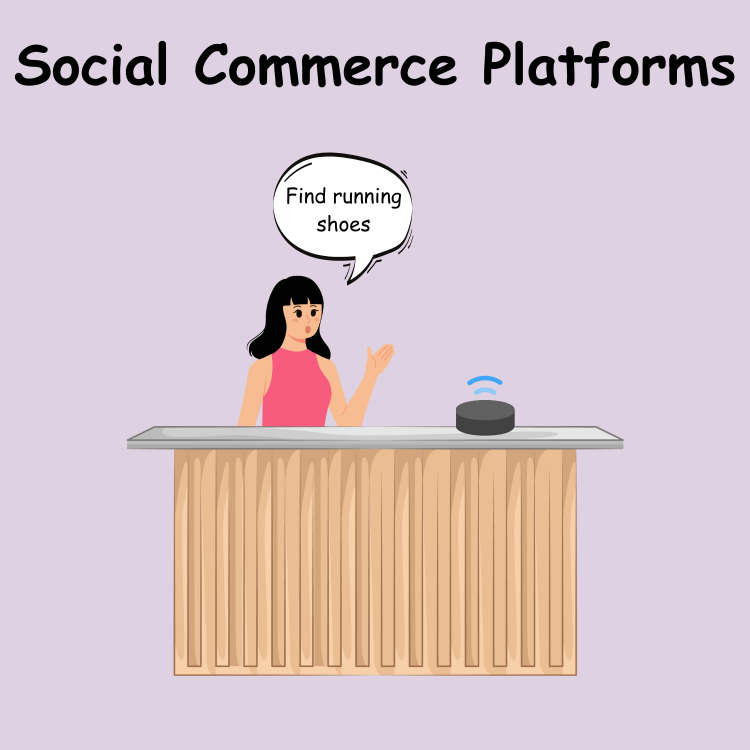
Voice commerce operates by combining voice recognition technology, natural language processing (NLP), and artificial intelligence (AI) to understand and execute spoken commands. Using smart devices like Amazon Echo, Google Nest, or smartphones, customers can perform tasks such as searching for products, comparing prices, and completing purchases—all through voice commands.
The Technology Behind It
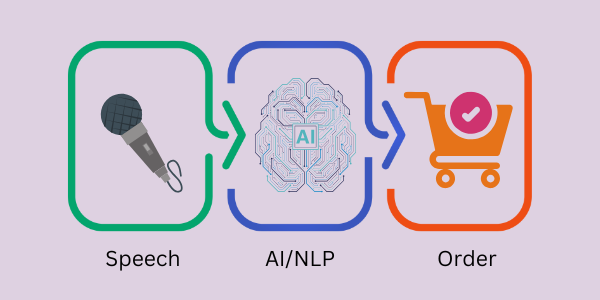
- Voice Recognition: Devices capture and analyze spoken words to interpret commands. This process relies on sophisticated AI models that continually improve their accuracy.
- Natural Language Processing (NLP): NLP allows devices to understand conversational queries, such as “Find me the cheapest vacuum cleaner” or “Order more coffee pods.”
- AI Algorithms: AI helps personalize the experience by suggesting products based on past purchases, preferences, or even current shopping trends.
- Integration with eCommerce Platforms: Voice assistants connect with retailers’ platforms to retrieve product information, check inventory, and process payments.
Typical User Journey
- Search: The user begins with a voice query, such as “Alexa, find me a pair of running shoes.”
- Product Selection: The assistant lists a few options, providing details like price, ratings, and availability.
- Add to Cart: The user selects an item by saying something like “Add the second one to my cart.”
- Purchase and Confirmation: The assistant processes the payment using pre-saved payment methods and provides a confirmation, such as “Your order for running shoes has been placed and will arrive in two days.”
A Seamless Shopping Experience
Voice commerce shines in scenarios requiring quick actions or repeat purchases. For instance, a busy professional might reorder their favorite coffee brand while preparing breakfast, or a parent could add diapers to their cart hands-free while tending to their child. These conveniences make voice shopping increasingly attractive to modern consumers.
By integrating voice commerce capabilities with tools like OneCart, businesses can ensure smooth backend operations, such as inventory sync and real-time order processing, to deliver a seamless experience for voice shoppers. As the technology continues to evolve, voice commerce is set to redefine how we shop in both convenience and efficiency.
Current Trends in Voice Commerce
Voice commerce is rapidly gaining traction, reshaping the retail landscape by catering to consumers’ demand for convenience and speed. As the technology matures, several key trends are emerging, signaling the direction of voice shopping in the near future.
Voice Search Optimization

As voice searches become more conversational, businesses are shifting their SEO strategies to accommodate this trend. Unlike text-based searches, voice queries are longer and more natural, often resembling full sentences or questions.
- Example: Instead of searching “best smartphones 2025,” a voice user might ask, “What are the best smartphones to buy in 2025 under $800?”
- Trend: Retailers are optimizing their product listings and websites to match these conversational queries, leveraging long-tail keywords and answering specific questions directly.
For further advice on SEO product descriptions, have a look here!
Voice-Enabled Retail Experiences
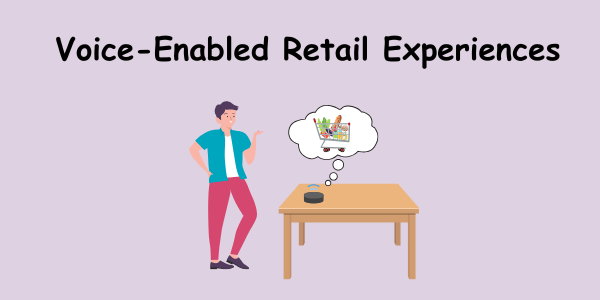
Leading retailers are integrating voice shopping into their eCommerce ecosystems. This includes everything from voice-enabled ordering on platforms like Amazon and Walmart to using smart assistants for in-store navigation or stock checks.
- Case Study: Walmart allows customers to add items to their carts via voice commands using Google Assistant, making grocery shopping easier for busy households.
- Impact: Such integrations drive repeat purchases and foster customer loyalty by providing a hassle-free shopping experience.
Integration with Smart Home Ecosystems
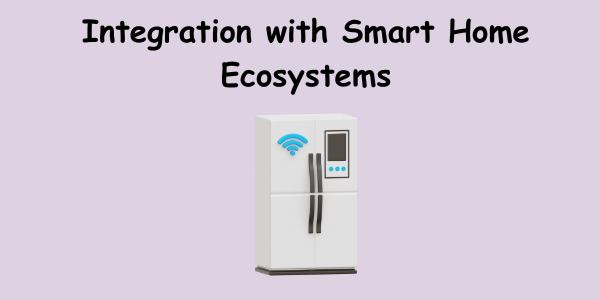
Voice shopping is becoming a natural extension of smart home technology. IoT devices like refrigerators, washing machines, and smart displays are now equipped to make purchases automatically or via simple voice commands.
- Example: A smart fridge can detect when supplies like milk are low and suggest placing an order through voice assistants.
- Trend: This integration blurs the lines between traditional eCommerce and automated replenishment, enhancing customer convenience.
Multi-Channel Synergy

The rise of voice commerce highlights the importance of multi-channel strategies for retailers. Voice shopping is no longer a standalone channel but works in harmony with web, mobile, and physical stores.
- Example: A customer might use a voice assistant to create a shopping list, complete the purchase on a smartphone, and pick up the items in-store.
- Benefit: This synergy creates a seamless shopping experience, encouraging customer retention and satisfaction.
For further insight on omnichannel vs multichannel ecommerce strategies, read our article here.
Social Commerce Meets Voice
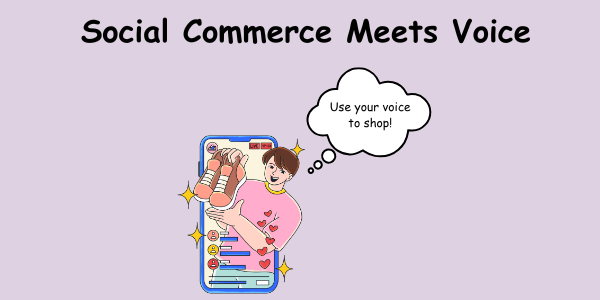
Social platforms are experimenting with voice-enabled shopping. For instance, Instagram and TikTok integrate shopping features that allow users to interact with brands through voice commands while engaging with video content.
- Future Potential: Voice-activated calls-to-action on social media could revolutionize influencer marketing, enabling direct purchases through conversational interactions.
Localized and Multi-Language Voice Shopping

With global adoption on the rise, voice commerce is adapting to regional preferences and languages. Support for dialects, accents, and localized recommendations is expanding.
- Example: Alexa and Google Assistant now offer services in multiple languages, catering to diverse markets and increasing accessibility.
How Businesses Can Leverage These Trends
To stay competitive, businesses must align their strategies with these trends:
- Optimize product descriptions for conversational search queries.
- Integrate voice commerce capabilities with their existing platforms, leveraging tools like OneCart for real-time inventory management and order fulfillment.
- Explore partnerships with IoT and smart home ecosystems to capture automated shopping opportunities.
By embracing these trends, retailers can position themselves at the forefront of the voice commerce revolution, delivering convenience and innovation to their customers.
Market Insights for Voice Commerce
The voice commerce market is expanding rapidly as consumers increasingly adopt voice-activated technologies for their shopping needs. Understanding the current market dynamics and potential growth areas can help businesses capitalize on this trend.
Demographics
Voice commerce appeals to a broad demographic, but certain groups show higher adoption rates.
- Tech-Savvy Millennials and Gen Z: These groups lead in adopting voice commerce, valuing convenience and seamless integration with other digital services.
- Busy Professionals and Parents: Voice shopping saves time, making it popular among individuals managing packed schedules.
- Geographic Trends: The U.S. leads in voice commerce adoption, but emerging markets in Asia and Europe are catching up rapidly, driven by localized language support and affordable devices.
Popular Use Cases
Voice commerce is particularly effective for certain types of purchases where speed and convenience are key.
- Grocery Shopping: Reordering everyday essentials like milk, eggs, or cleaning supplies is a top use case.
- Example: “Alexa, add paper towels to my cart.”
- Entertainment and Subscriptions: Consumers use voice assistants to buy movie tickets, stream music, or renew subscriptions.
- Example: “Google, buy tickets for the 7 PM show at Regal Cinemas.”
- Electronics and Gadgets: Researching and purchasing electronics, especially with detailed product information.
- Example: “Siri, find the best headphones under $200.”
- Healthcare and Wellness: Ordering prescriptions or scheduling health appointments via voice assistants.
- Example: “Alexa, reorder my vitamins.”
Voice Assistant Market Share
The competitive landscape of voice assistants shows distinct leaders:
- Amazon Alexa: Commands the largest market share, particularly in the U.S., due to its integration with Amazon’s vast eCommerce platform.
- Google Assistant: Excels in search accuracy and localized support, making it popular globally.
- Apple Siri: Focuses on privacy and ecosystem integration, appealing to loyal Apple users.
Challenges and Opportunities
Despite rapid growth, voice commerce faces hurdles that present opportunities for businesses willing to innovate:
-
Challenges:
- Privacy Concerns: Consumers remain wary about data security and voice recordings.
- Limited Visual Context: Lack of product imagery can deter users from making high-value purchases.
- Regional Barriers: Limited support for certain languages or accents can hinder global adoption.
-
Opportunities:
- Enhanced Personalization: Using AI to deliver tailored recommendations based on voice shopping history.
- Localized Solutions: Expanding language support and optimizing for regional markets.
- Cross-Platform Integration: Bridging the gap between voice commerce and other eCommerce channels for a unified shopping experience.
The Role of Tools Like OneCart
Platforms like OneCart enable businesses to harness voice commerce opportunities by providing:
- Real-Time Inventory Sync: Ensures product availability across voice platforms.
- Order Management: Centralizes voice-generated orders with other sales channels for streamlined fulfillment.
- Localized Support: Adapts to regional preferences and helps businesses expand their reach.
By understanding the voice commerce market’s potential and addressing its challenges, businesses can position themselves to thrive in this rapidly growing sector.
How OneCart Enables Voice Commerce
Voice commerce represents the next frontier in eCommerce, but to harness its full potential, businesses need robust tools to manage the complexities of multi-channel operations. OneCart is designed to bridge the gap between voice commerce and seamless backend management, enabling businesses to deliver a superior shopping experience through voice-activated platforms.
1. API-Driven Integration for Voice Assistants
An open API system enables seamless integration with popular voice assistants like Amazon Alexa, Google Assistant, and Siri, allowing businesses to connect their eCommerce platforms with voice commerce solutions. By leveraging this flexibility, businesses can ensure smooth communication between their systems and voice platforms.
-
Capabilities:
- Facilitate real-time data exchange for inventory updates and order processing.
- Support integration with major eCommerce platforms like Shopify, WooCommerce, and Magento for consistent operations across channels.
-
Example: A customer might ask, “Alexa, do you have running shoes in size 10?” The system retrieves real-time stock data, confirms availability, and facilitates the order placement seamlessly.
2. Centralized Inventory and Order Management
Voice commerce thrives on speed and accuracy, which requires centralized systems to manage stock levels and order processing. OneCart’s unified dashboard allows businesses to manage voice-generated orders alongside orders from other channels.
-
Benefits:
- Avoid stockouts with real-time inventory synchronization.
- Process voice-generated orders as quickly as those from web or mobile platforms.
- Prevent overselling by automatically updating stock levels across all connected platforms.
-
Feature Highlight: OneCart’s automatic inventory sync ensures that voice commerce orders are reflected instantly in the system, avoiding discrepancies and customer frustration.
3. Personalized Customer Experiences
Voice commerce is most effective when it delivers personalized shopping experiences. OneCart leverages analytics and reporting tools to help businesses understand customer preferences and tailor their offerings.
-
How It Works:
- Track voice commerce sales data to identify popular products.
- Use historical purchasing behavior to suggest relevant products for repeat purchases.
- Integrate dynamic pricing and promotions tailored to voice shoppers.
-
Example: If a customer frequently reorders coffee pods, OneCart enables businesses to suggest deals or auto-replenishment options through voice assistants.
4. Enhanced Reporting and Insights
Understanding performance is critical in any sales channel, including voice commerce. OneCart provides detailed analytics on voice-activated orders, helping businesses refine their strategies.
-
Key Metrics:
- Conversion rates from voice commerce.
- Best-selling products through voice platforms.
- Regional trends and demand analysis.
-
Use Case: A business notices that voice orders peak during weekends. Using this insight, they offer weekend-exclusive voice discounts to boost sales.
Learn more in our in-depth article about sales reports.
5. Localization for Global Reach
Voice commerce adoption varies by region, with localized language support and cultural preferences being key drivers. OneCart enables businesses to adapt their operations for global markets.
- Capabilities:
- Manage multi-language product listings for compatibility with regional voice assistants.
- Customize promotions and pricing based on location.
- Ensure accurate stock and order management across multiple geographies.
6. Scalable Solutions for Businesses of All Sizes
Whether you’re a small retailer venturing into voice commerce or an established brand scaling operations, OneCart offers flexible solutions to match your needs.
- For Small Businesses: Simplified integrations with voice assistants and intuitive dashboards make it easy to get started.
- For Enterprises: Advanced API capabilities and multi-channel management support complex operations across diverse platforms.
Why Choose OneCart for Voice Commerce?
OneCart empowers businesses to:
- Streamline operations with real-time inventory sync and centralized order management.
- Deliver personalized, data-driven experiences to voice commerce shoppers.
- Scale effortlessly to meet growing demand in the voice commerce market.
By enabling businesses to manage the complexities of voice commerce effectively, OneCart ensures that they can stay ahead of the curve and deliver the seamless shopping experiences that customers now expect.
Frequently Asked Questions (FAQs)
1. What is voice commerce?
Voice commerce refers to the process of using voice-activated technology, such as Amazon Alexa, Google Assistant, or Siri, to search for products, make purchases, and complete transactions. It combines artificial intelligence (AI) and natural language processing (NLP) to facilitate hands-free shopping experiences.
2. How does voice commerce work?
Voice commerce operates through voice recognition, NLP, and AI. Customers give commands to smart devices like “Order coffee pods,” and the assistant processes the request by accessing eCommerce platforms, checking inventory, and completing the purchase using stored payment details.
3. What types of products are commonly purchased through voice commerce?
Voice commerce is most popular for:
- Repeat purchases like groceries or household supplies.
- Digital products such as music and movie subscriptions.
- Simple items like books, gadgets, or consumables. These products often require less visual confirmation compared to apparel or high-value items.
4. Is voice commerce secure?
Voice commerce incorporates security measures such as voice recognition, multi-factor authentication, and encrypted transactions. However, businesses must address potential risks like unauthorized voice commands by implementing strong verification systems.
5. What challenges does voice commerce face?
The main challenges include:
- Privacy concerns over voice data.
- Misinterpretation of commands due to accents or complex queries.
- Limited visual context for certain products. Businesses can address these challenges through transparency, improved AI, and integration with visual platforms like smart displays.
6. How can businesses optimize for voice commerce?
To optimize for voice commerce, businesses should:
- Use conversational SEO to align product descriptions with natural speech patterns.
- Ensure real-time inventory updates across platforms using tools like OneCart.
- Offer personalized shopping experiences by analyzing voice shopping behavior.
7. What role does OneCart play in voice commerce?
OneCart simplifies the integration of voice commerce by:
- Providing API-driven synchronization with voice assistants.
- Centralizing inventory and order management for seamless operations.
- Offering real-time analytics to track and improve voice commerce performance.
Summary
Voice commerce is transforming eCommerce by enabling hands-free shopping through devices like Alexa, Google Assistant, and Siri. This innovation reshapes customer expectations, offering businesses opportunities to streamline operations and meet demand for convenience. While challenges like privacy concerns and integration persist, tools with open API systems help connect voice platforms with eCommerce systems, enhancing personalization and efficiency. As AI, IoT, and localization advance, businesses adopting voice commerce will gain a competitive edge by delivering seamless, secure, and engaging shopping experiences.
Sign up for OneCart today and unlock the future of eCommerce.